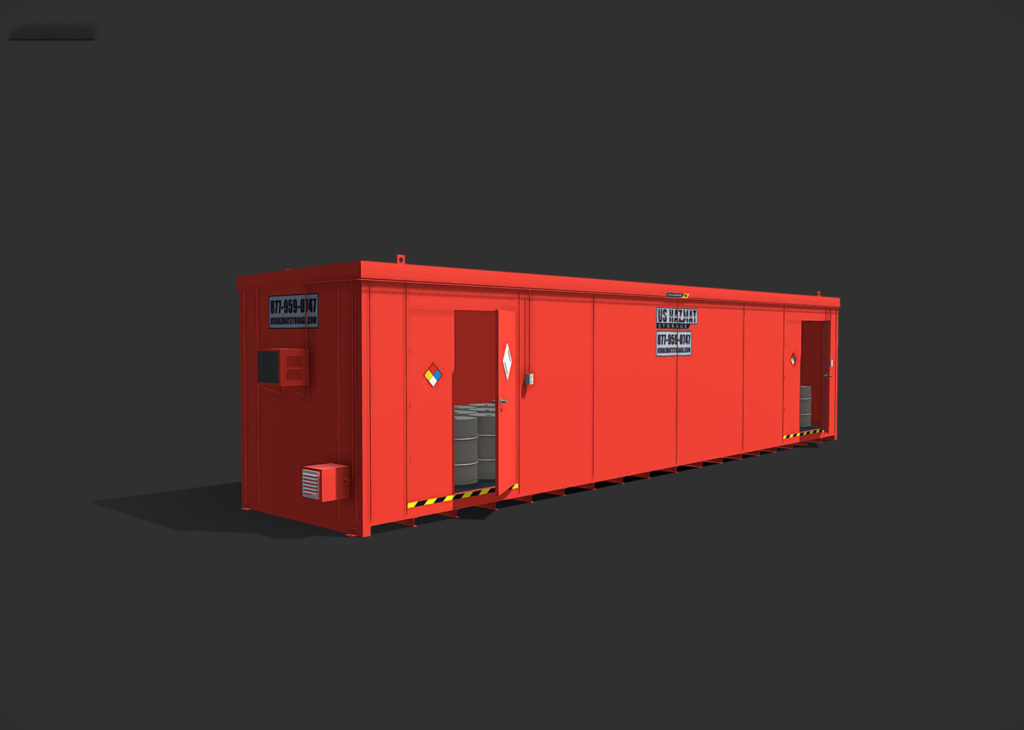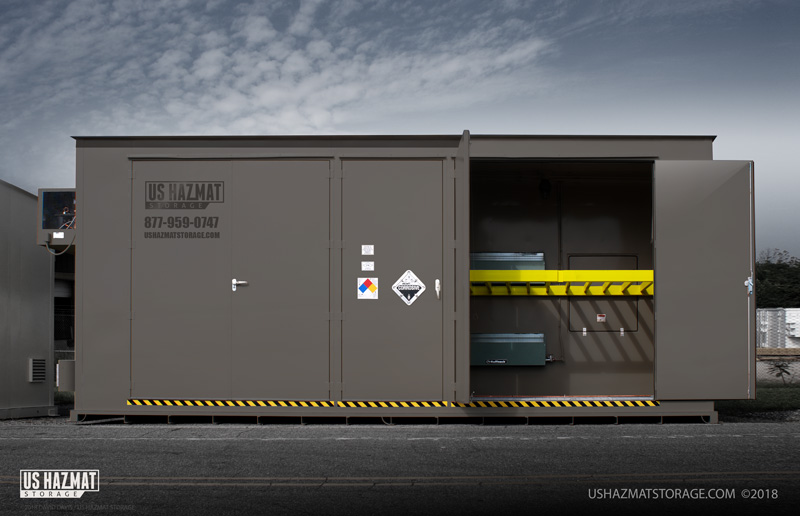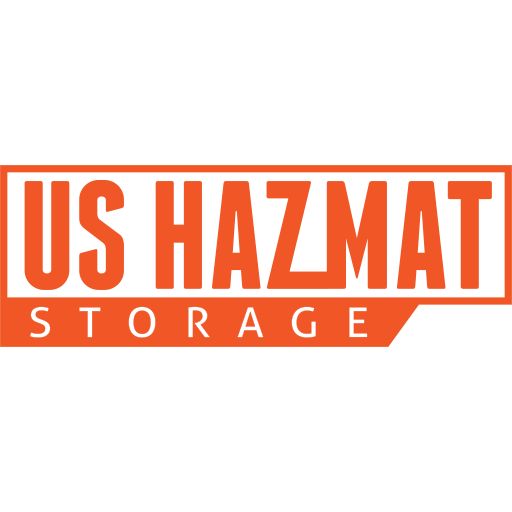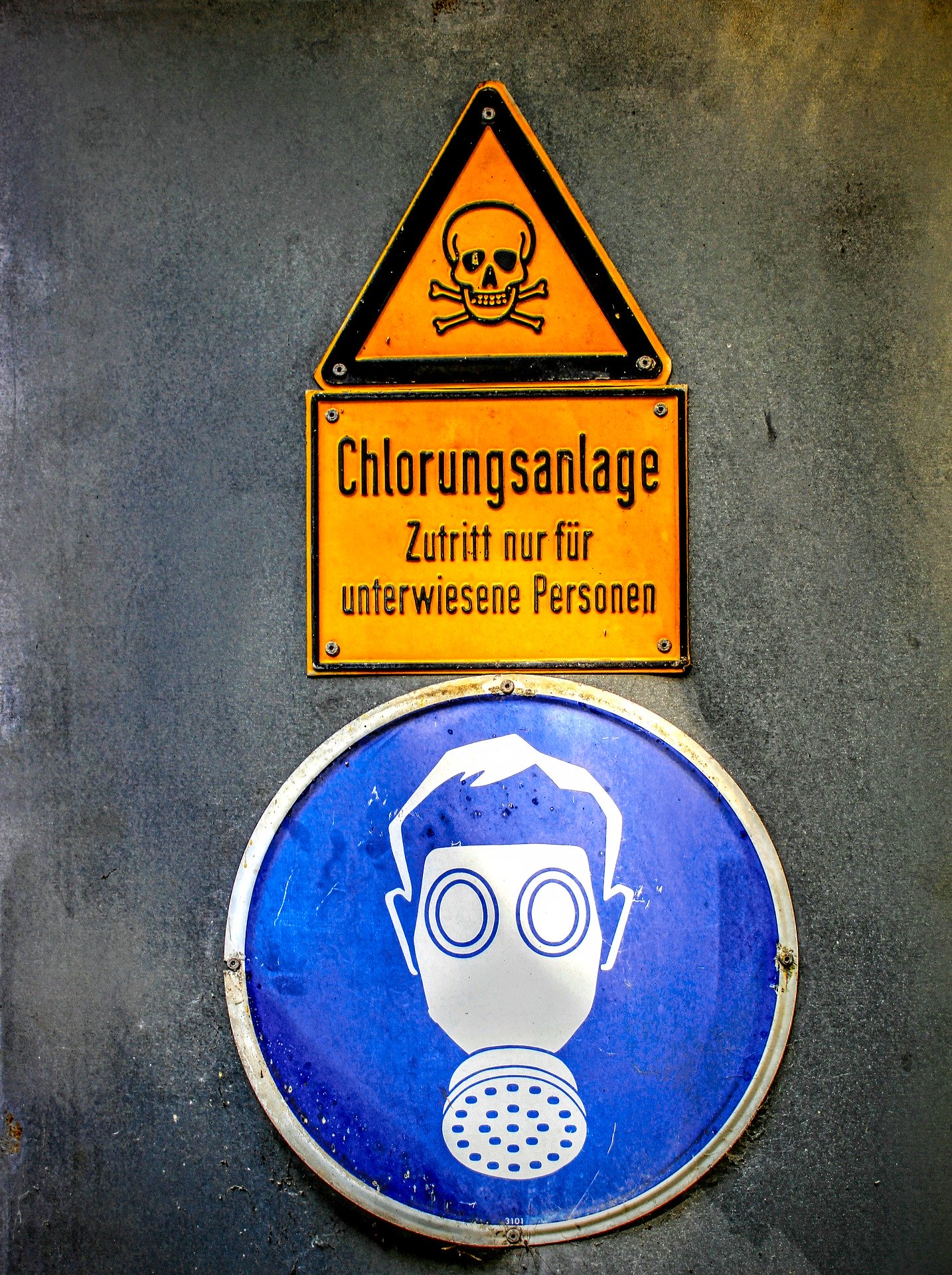Separation of volatile chemicals and hazardous materials is crucial in the workplace. Flammable hazardous materials are often the catalyst to conflagrations and inadvertent contamination. Indirect intermingling of hazardous materials can also lead to harmful and dangerous exposure to employees. Hazardous materials hail from various classifications and due to their composition, must be stored separately from one another. Hazardous materials from different classifications are like water and oil; they just don’t mix. Knowing how and where to store hazardous materials can be just as important as investing in a steel storage container or locker. A recent chlorine gas spill reiterated the importance of proper chemical storage.
Continuous steel gauge protection and quarter-inch steel panel protection

Understanding the propensity for dangerous chemical interactions can prevent avoidable injuries and hefty fines in any industry. U.S. Hazmat Storage is an industry leader in providing both fire-rated, as well as non-fire-rated protection through innovative shelving and partitions that allows for the storage of incompatible chemicals in the same locker. A continuous steel grated floor sump system comes standard in many storage lockers. Galvanized for superior strength and protection, the sump system allows potentially toxic and dangerous chemicals to pass through the flooring in the event of a spill. The sump then collects the hazardous material, so it can be safely collected at a later time.
Shelving and steel partitioning keep volatile chemicals separate and employees safe

When it comes to proper chemical storage, knowledge is key. By simply knowing the differences in chemical classification and which materials should be stored separately can save lives and unnecessary fines, as well as legal fees. U.S. Hazmat Storage chemical lockers and warehouses can safely store different chemicals in the same locker through shelving and partitioning. Recently, a couple employees at Waffle House in Fredericksburg, Va. learned that some materials should never come in proximity of one another.
Just before 6 p.m. on Monday, August 10, units with the Stafford County Fire and Rescue Department responded to a reported hazardous materials spill in the 00 block of Civilian Street.
The caller reported de-limer mixed with Clorox bleach while cleaning coffee pots, producing chlorine gas. The only two occupants of the building self-evacuated and were evaluated by emergency medical personnel on the scene and decontaminated as a precaution. No injuries were reported.
Due to the nature of the call, the Virginia Emergency Operations Center (EOC) called in the Regional Hazardous Materials Team, which is staffed by the Fredericksburg Fire Department to assist in mitigating the situation.
Source: potomaclocal.com
Many employees don’t consider the perils of improper storage when restaurants or the food industry come to mind, but many common cleaners are laden with toxic and dangerous chemicals. Spills such as these should have been prevented through proper storage. If these chemicals had been stored in a steel gauge hazardous materials locker, the employees would have likely recognized the importance in separation and careful application.
Explosion proof lighting and reliable mechanical ventilation
In addition to fire-rated technology, U.S. Hazmat Storage steel gauge lockers also provide the option of explosion proof lighting and other electrical components. Mechanical ventilation also allows for optimal climate controlled lockers that keep hazardous materials at a safe temperature. Maintaining an optimal temperature within the locker not only minimizes the chance of fire or explosion, but also prevents a breakdown of chemical consistency and composition.


